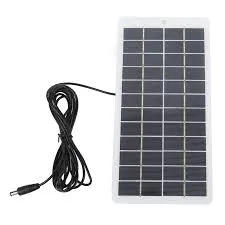Evaluating the Latest Advancements in Efficiency of Contemporary Solar Panel Technology and Their Impact
The Efficiency of Modern Solar Panels A Comprehensive Overview
The transition to renewable energy sources has become a crucial priority in addressing the challenges posed by climate change and the depletion of fossil fuels. Among various renewable alternatives, solar energy has emerged as one of the most promising options. At the core of harnessing solar power are solar panels, which primarily convert sunlight into electricity. Understanding the efficiency of modern solar panels is essential for consumers, investors, and policymakers in order to maximize the potential benefits of solar energy.
Solar panel efficiency, often expressed as a percentage, refers to the ratio of the electrical output of a solar panel to the amount of sunlight it receives. This efficiency is influenced by various factors including the type of solar cells used, the design of the panels, environmental conditions, and installation practices. Modern solar panels have seen significant advancements in efficiency, driven by ongoing research and technological innovations.
There are several types of solar cells, each with varying efficiency rates. The most commonly used types include monocrystalline, polycrystalline, and thin-film solar cells. Among these, monocrystalline panels are recognized for their high efficiency, typically ranging from 15% to 22%. These panels are made from a single continuous crystal structure, which allows them to achieve higher efficiency levels due to their ability to absorb more sunlight. In contrast, polycrystalline panels, composed of multiple crystal structures, usually achieve efficiencies between 13% and 16%. Thin-film solar cells, while generally less efficient—ranging from 10% to 12%—have the advantage of being lightweight and flexible, making them suitable for various applications.
efficiency of modern solar panels

As of now, the most efficient solar panels on the market boast efficiencies above 23%, with some experimental models reaching as high as 47% under specific conditions. These advancements are thanks to innovations in bifacial technology, which captures sunlight from both sides of the panel, and the development of multi-junction cells, which layer different materials to capture a wider spectrum of sunlight. Such high-efficiency panels can drastically reduce the space required for installation, making them particularly appealing for urban environments where rooftop space is limited.
Despite the advancements in efficiency, solar panels still face challenges. One significant challenge is the impact of environmental factors such as temperature, shading, and dust accumulation, which can reduce the overall performance of solar installations. Moreover, the initial cost of high-efficiency panels often deters potential customers, despite their long-term savings on energy bills. However, it is important to consider that the lower energy costs and reduced carbon footprint associated with efficient solar panels can outweigh the initial investment over time.
In conclusion, the efficiency of modern solar panels has improved dramatically, making solar energy a more viable and attractive option for both residential and commercial applications. Innovations in technology continue to push the boundaries of what’s possible, paving the way for a cleaner and more sustainable future. As the market for solar energy grows, understanding the intricacies of solar panel efficiency will empower consumers and businesses to make informed choices, ultimately contributing to a greener planet. The ongoing challenge remains to make these efficient technologies accessible and affordable for everyone, ensuring that solar energy can play a crucial role in the global energy transition.
-
Unlocking Energy Freedom with the Off Grid Solar InverterNewsJun.06,2025
-
Unlock More Solar Power with a High-Efficiency Bifacial Solar PanelNewsJun.06,2025
-
Power Your Future with High-Efficiency Monocrystalline Solar PanelsNewsJun.06,2025
-
Next-Gen Solar Power Starts with Micro Solar InvertersNewsJun.06,2025
-
Harnessing Peak Efficiency with the On Grid Solar InverterNewsJun.06,2025
-
Discover Unmatched Efficiency with the Latest String Solar InverterNewsJun.06,2025







